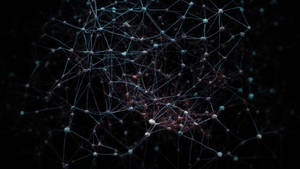Regression: Linear Regression

Linear regression is a fundamental concept in the field of machine learning and statistics. It is a type of supervised learning algorithm that is used to model the relationship between a dependent variable and one or more independent variables by fitting a linear equation to the observed data.
Key Concepts:
Dependent Variable (Target Variable):
- The variable we are trying to predict or understand.
Independent Variables (Features):
- The input variables used to make predictions about the dependent variable.
Linear Equation:
- In simple linear regression, the relationship between the independent and dependent variables is modeled as a straight line represented by the equation: [ Y = mX + b ] where (Y) is the dependent variable, (X) is the independent variable, (m) is the slope of the line, and (b) is the intercept.
Fitting the Line:
- The goal of linear regression is to find the best-fitting line that minimizes the difference between actual values and predicted values. This process involves finding optimal values for (m) and (b).
Residuals:
- Residuals are differences between observed values and predicted values. Linear regression aims to minimize these residuals to create an accurate model.
Metrics:
- Common metrics used to evaluate linear regression models include Mean Squared Error (MSE), Root Mean Squared Error (RMSE), Mean Absolute Error (MAE), R-squared value etc.
Assumptions:
- Linearity
- Independence
- Homoscedasticity
- Normality
Types of Linear Regression:
Simple Linear Regression:
- When there's only one independent variable.
Multiple Linear Regression:
- When there are multiple independent variables involved.
9.Applications:
- Prediction & Forecasting,
- Risk Assessment,
- Sales Forecasting,
- Resource Allocation.
Conclusion:
In conclusion, linear regression serves as a foundational building block in machine learning, providing valuable insights into relationships within data sets through mathematical modeling techniques based on historical observations. Understanding how linear regression works can be essential for predictive modeling tasks across various domains including finance, healthcare, marketing, and more.
Sponsored
Sponsored
Sponsored
Explore More:

Model Evaluation and Selection
Topic model evaluation and selection are crucial steps in the process of building...

Feature Engineering
Feature engineering is the process of selecting, creating, and transforming features (inputs) in...

Natural Language Processing (NLP)
Natural Language Processing (NLP) is a subfield of artificial intelligence that focuses on...

Neural Networks and Deep Learning
Neural networks are a class of algorithms modeled after the human brain's neural...

Reinforcement Learning
Reinforcement learning is a branch of machine learning concerned with how intelligent agents...

Dimensionality Reduction: Autoencoders
Autoencoders are a type of artificial neural network used for learning efficient representations...

Dimensionality Reduction: Factor Analysis
Factor analysis is a powerful technique used in the field of machine learning...

Dimensionality Reduction: Independent Component Analysis (ICA)
Independent Component Analysis (ICA) is a dimensionality reduction technique commonly used in machine...

Dimensionality Reduction: t-Distributed Stochastic Neighbor Embedding (t-SNE)
Dimensionality reduction is a fundamental technique in machine learning and data visualization that...

Dimensionality Reduction: Principal Component Analysis (PCA)
Principal Component Analysis (PCA) is a popular dimensionality reduction technique used in machine...

Unsupervised Learning: Dimensionality Reduction
Unsupervised learning dimensionality reduction is a crucial concept in machine learning that deals...

Clustering: Gaussian Mixture Models
Clustering is a fundamental unsupervised learning technique used to identify inherent structures in...

Clustering: DBSCAN
DBSCAN (Density-Based Spatial Clustering of Applications with Noise) is a popular clustering algorithm...

Clustering: Hierarchical Clustering
Hierarchical clustering is a popular unsupervised machine learning technique used to group similar...

Clustering: K-Means
Clustering is an unsupervised machine learning technique that aims to partition a set...

Unsupervised Learning: Clustering
Unsupervised learning clustering is a fundamental concept in machine learning that involves identifying...